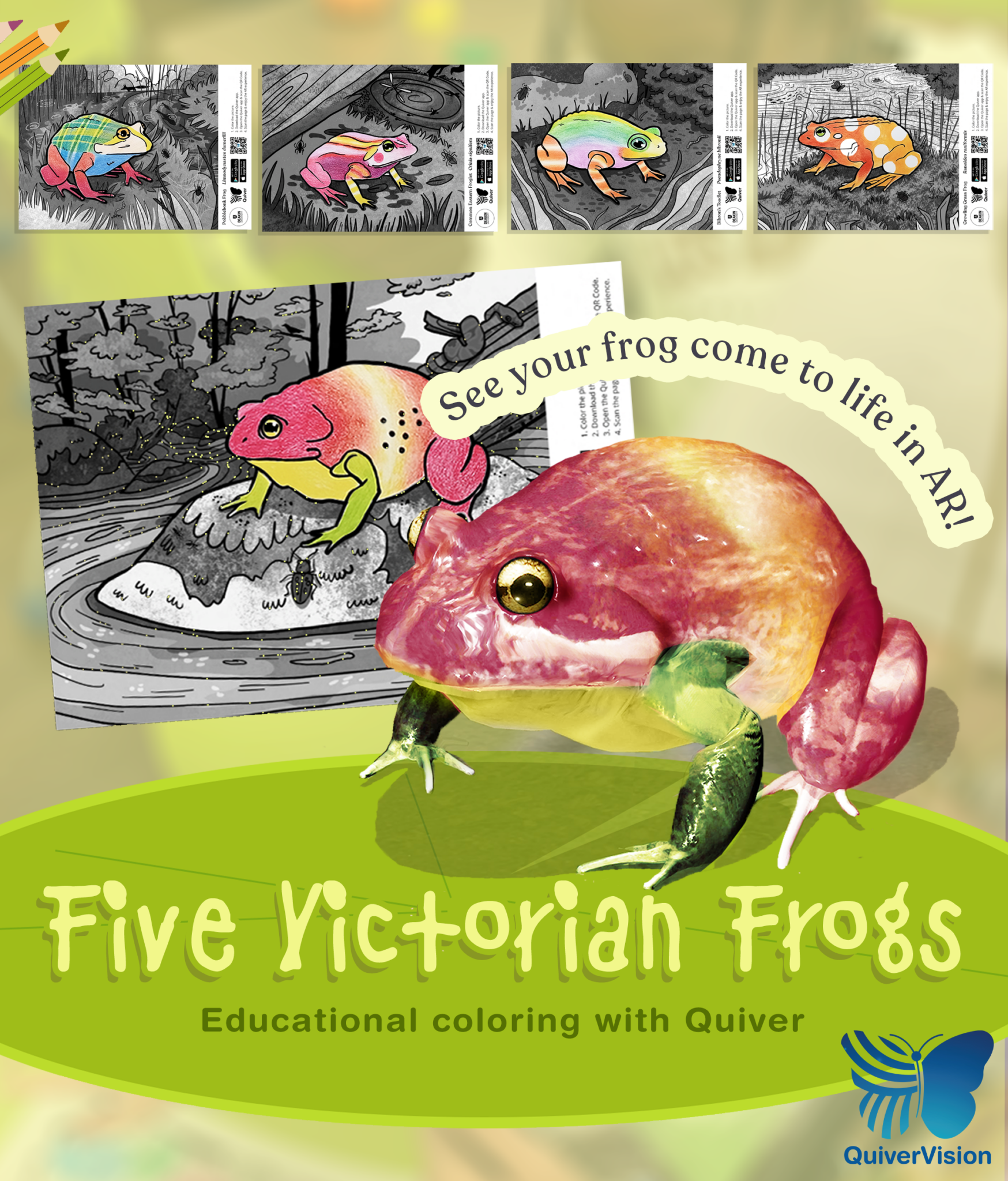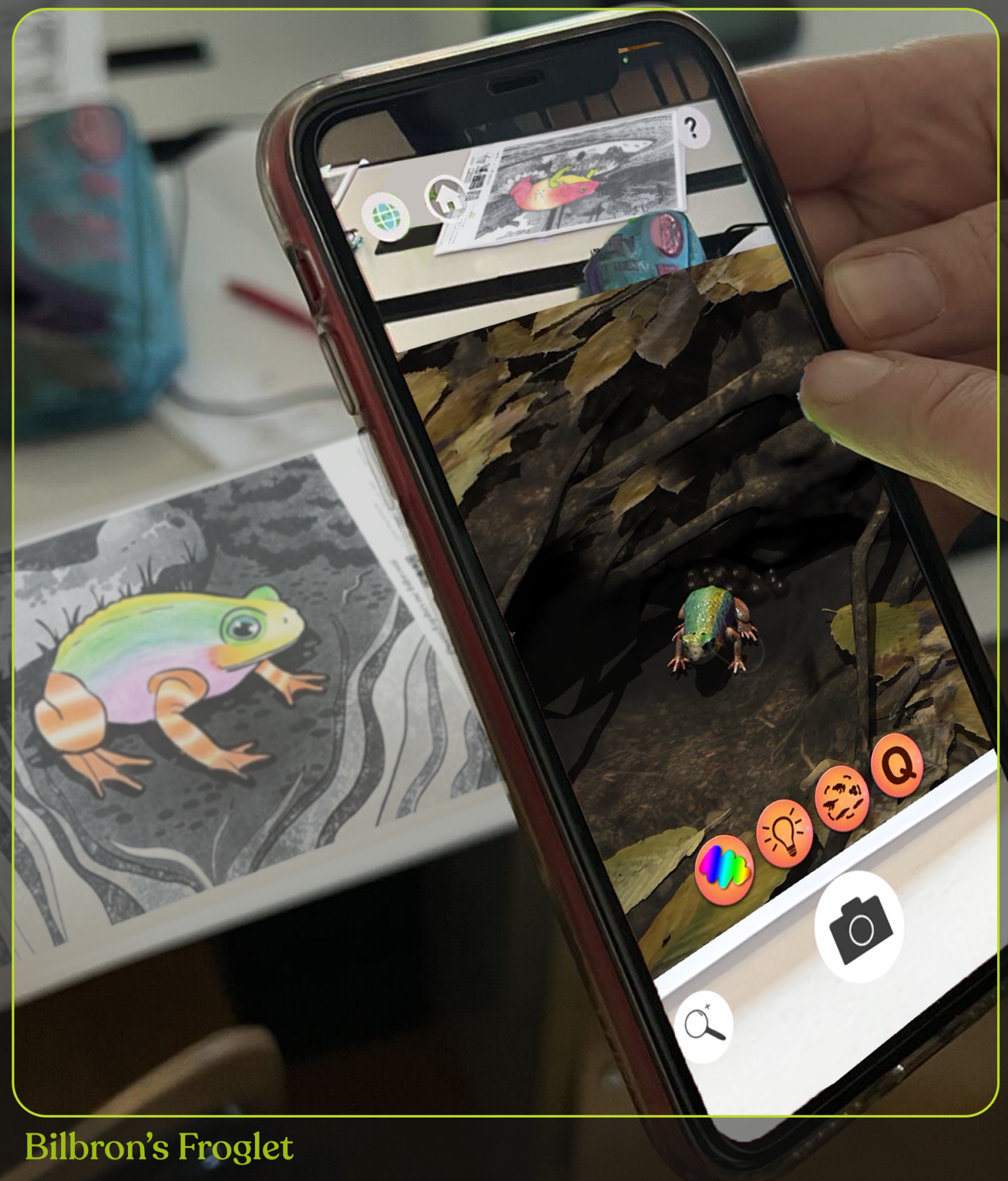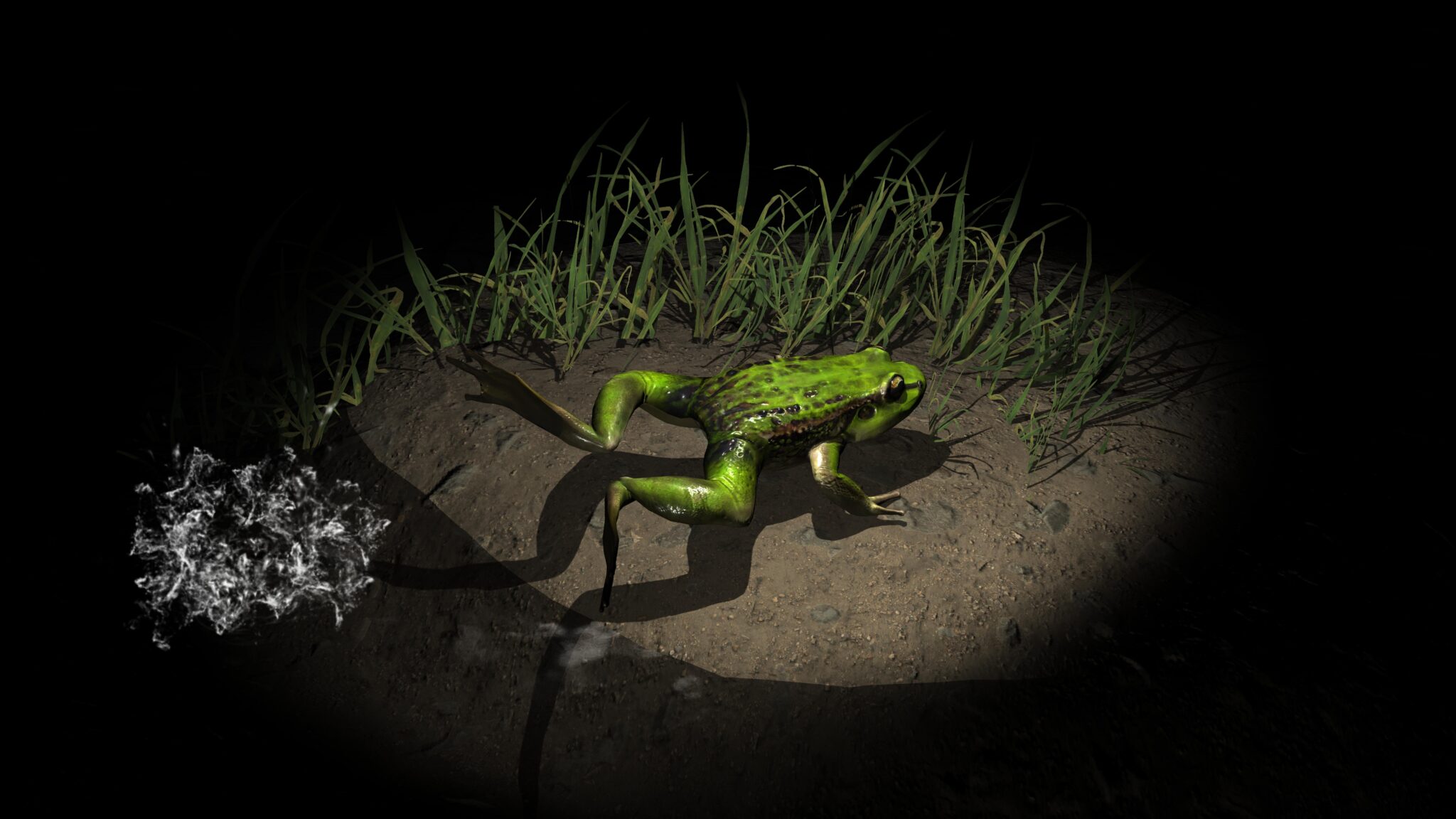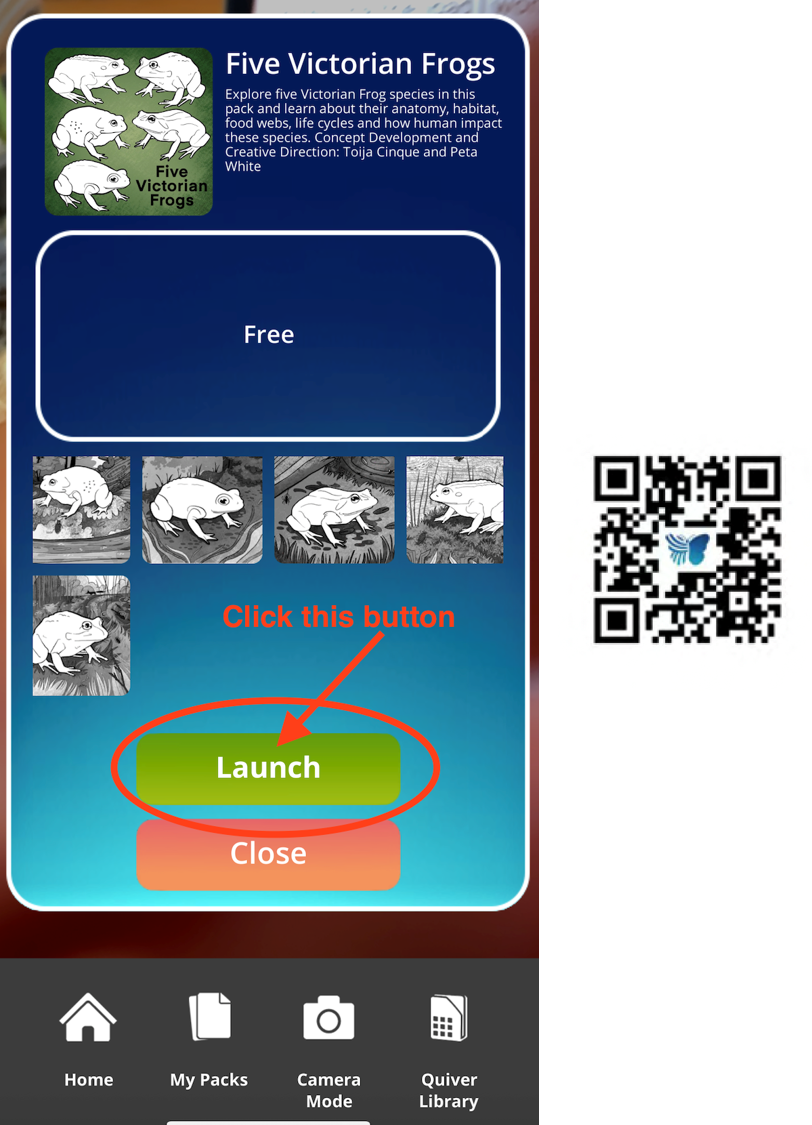What is the programme?
As part of the Butterfly educational programme, visitors aged five to ninety-five are invited to engage with the natural world through a guided exploration of the exhibition and the Five Victorian Frogs Immersive Learning Experience (ILE). This interactive AR installation brings five of Victoria’s endemic frog species to life—each a vital bio-indicator of environmental change.
Following the experience, participants take part in a reflective discussion on ecological butterfly effects, climate change, and species interdependence. The session concludes with a short survey, encouraging critical thinking and personal connection to environmental futures. Designed to inspire curiosity, care, and climate consciousness, this learning experience blends digital media, scientific insight, and playful inquiry.
When does this happen?
The official day of the educational programme is Wednesday, August 13th, 2025. The programme will be available every hour (except lunchtime) starting on the hour, and will last for 45 minutes, the times for August 13th are as follows:
- 10:00-10:45
- 11:00-11:45
- 13:00-13:45
- 14:00-14:45
- 15:00-15:45
However, there is the possibility to book times during the course of the exhibition (from August 18-29th, 2025). Welcome!
How do we book?
To book a time, please contact rebekah.rousi@uwasa.fi (or phone +358 442381044).
To start with – what is a ’butterfly effect’?
The Butterfly Effect shows us how small changes can lead to big impacts. Just like a butterfly flapping its wings might shift the weather far away, our everyday actions—good or bad—can ripple through the environment. The Butterfly Effect is, however, often misunderstood as a symbol of chaos—but meteorologist Edward Lorenz meant something deeper. He showed that within seeming disorder, there are patterns—and that small changes can lead to new, predictable futures if we pay close attention. In this spirit, the Five Victorian Frogs immersive experience invites children and families to explore how tiny shifts in the environment—like cleaner water or a restored habitat—can ripple out into real, lasting change. Through augmented reality and playful roleplay, participants learn that their choices matter, and that creative action can shape a better world.
 Five Victorian Frogs: An Immersive Learning Experience (ILE)
Five Victorian Frogs: An Immersive Learning Experience (ILE)
This work responds to the urgency of ecological awareness through a synthesis of digital art practice and scientific inquiry. Five Victorian Frogs: An Immersive Learning Experience (ILE) is a new media installation that leverages augmented reality (AR) to reanimate five endemic frog species of Victoria, Australia—each a bio-indicator of ecosystem health and environmental change. Through animated, interactive visualisations, audiences encounter the Baw Baw Frog, Bibron’s Toadlet, Common Eastern Froglet, Growling Grass Frog, and the Pobblebonk Frog within layered ecosystems rich in scientific detail and sensory engagement. Drawing on research into immersive learning and science education, this installation is both a pedagogical and aesthetic intervention. It embodies a response to contemporary educational inequities intensified by global lockdowns, and to the broader disaffection from the natural world, often termed ‘nature deficit disorder’. In doing so, it addresses gaps in place-based scientific education, aiming to reconnect young learners—and broader publics—with the biodiversity of their immediate environments. By integrating interactive technologies, ILE extends the potential of digital media art to foster care, understanding, and protection of fragile ecosystems.
Special note about the research behind the educational programme
This research unites scientists and teachers to translate contemporary climate-related research practices into a novel curriculum approach that emphasises deep knowledge of science and scientific practices, values and decision making designed to prepare students for a 21st century marked by complex work futures and major socio-scientific challenges related to climate change. The research addresses the pressing national issues of developing students’ STEM engagement and competencies for fast changing work futures, and for decision making and action regarding climate-related challenges.
This initiative has been developed by Toija Cinque and Peta White
See more and play the game at:
